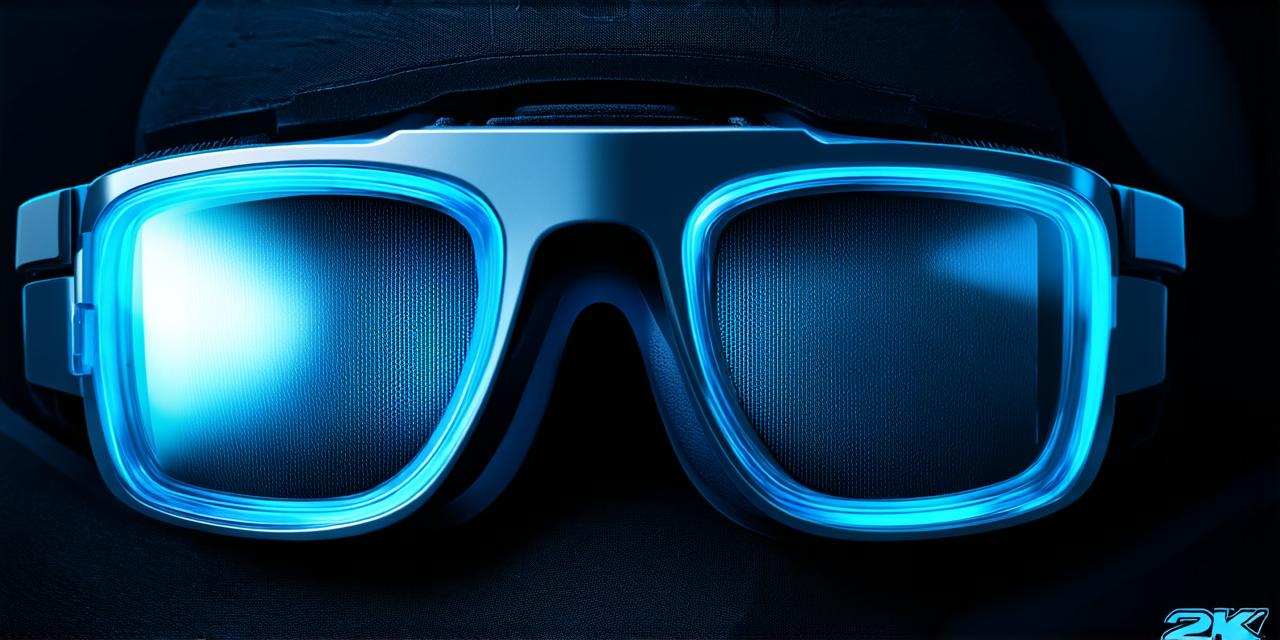The Benefits of Virtual Reality
Before we dive into the potential risks associated with VR, let’s first take a look at some of the benefits it offers. One of the main advantages of VR technology is that it can provide users with an immersive and interactive experience that can help to enhance their creativity, focus, and overall well-being. For example, studies have shown that VR can be used in therapy to treat conditions such as anxiety, depression, and PTSD by providing a safe and controlled environment for patients to confront their fears.
The Risks of Virtual Reality
While there are many benefits to using VR technology, there are also concerns about its potential negative effects on eye health. One of the main risks associated with VR is that it can cause eye strain and dryness. This is because users often have to look at a fixed point in space for extended periods of time while wearing VR headsets, which can lead to blurred vision and discomfort.
In addition, some studies have suggested that prolonged use of VR technology may increase the risk of developing computer vision syndrome (CVS), a condition characterized by dry eyes, eye strain, and headaches. While CVS is generally not serious, it can be uncomfortable and disruptive to daily life.
Another potential risk associated with VR is that it may cause motion sickness in some users. This is particularly true for those who are prone to motion sickness or have a weak inner ear. Motion sickness can lead to nausea, dizziness, and other unpleasant symptoms.
The Impact of Virtual Reality on Eye Health: A Closer Look
To better understand the potential risks associated with VR technology, it’s important to take a closer look at the specific ways in which it may affect eye health. One study published in the journal Nature found that prolonged use of VR headsets can lead to changes in the retina and optic nerve, which are responsible for transmitting visual information from the eyes to the brain.
Another study published in the Journal of Affective Disorders found that VR exposure was associated with an increase in symptoms of anxiety and depression in users. While the exact cause of this effect is not fully understood, it may be related to the fact that VR can provide a highly immersive and realistic experience that can trigger strong emotions.
Case Studies and Personal Experiences
One of the best ways to understand the potential risks associated with VR technology is by looking at real-life case studies and personal experiences. For example, one user reported experiencing eye strain and dryness after spending several hours wearing a VR headset while playing a game. Another user reported feeling motion sickness while using VR for therapy to treat anxiety.
One study published in the journal Frontiers in Psychology found that users who experienced motion sickness while using VR technology were more likely to report negative feelings about the experience, which could lead them to avoid using VR in the future.

How Can You Protect Your Eyes While Using Virtual Reality?
While there are some potential risks associated with VR technology, there are also steps you can take to protect your eyes while using it. One of the most important things you can do is to take regular breaks from using VR headsets and take time to rest your eyes. This can help to prevent eye strain and dryness and reduce the risk of developing computer vision syndrome.
In addition, you can also use VR headsets that are specifically designed to reduce eye strain and improve comfort. Some headsets come with features such as adjustable lenses and eye-tracking technology that can help to reduce discomfort and improve visual clarity.
Finally, it’s important to be aware of the potential risks associated with motion sickness and take steps to minimize them. This may include avoiding VR while traveling or under the influence of alcohol and drugs, as well as taking breaks from using VR if you start to feel symptoms of motion sickness.
Conclusion
In conclusion, while virtual reality technology has many potential benefits, there are also concerns about its potential negative effects on eye health. While some studies have suggested that VR may be associated with changes in the retina and optic nerve, as well as an increase in symptoms of anxiety and depression, it’s important to remember that these risks can be minimized by taking regular breaks, using comfortable headsets, and being aware of potential triggers for motion sickness. By doing so, users can enjoy the immersive and interactive experience of VR technology while also protecting their eye health.
